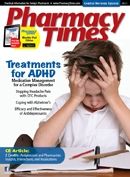Publication
Article
Pharmacy Times
Fighting Diversion at Home and in the Workplace
Author(s):
Controlled substances are often diverted from legitimate patients in the home and health care settings.
Controlled substances are often diverted from legitimate patients in the home and health care settings.

The improvement of prescription monitoring programs and the development of abuse-resistant painkillers are 2 ways in which we are moving forward on addressing prescription drug abuse offenses (see January 2011 column). Two other issues round out my hopes for progress in this initiative in 2011.
Securing Prescription Medication
One of the issues that has surfaced more recently through surveys and other data is that a significant amount of controlled substances are being diverted in our own homes. These thefts are being perpetrated by teenagers and adults, either those living in the home and those visiting as guests, or by laborers who perform a variety of services.
The vast majority of the time, these diversions are being unwittingly enabled by legitimate patients who are unaware that their medication is in incredible demand and available to people who come into their residence.
Patient education needs to start at the physician’s office. Patients who receive controlled substances for the first time should be mandated to view a short video that educates them about and offers solutions for the potential problems of having these drugs in their possession. Perhaps once a year, a review of the video would be appropriate for chronic pain patients, who will likely receive these medications for the rest of their lives. These patients should be encouraged to talk to their prescriber if they suspect a problem.
Virtually every time I give a presentation on this topic, I advise the audience to go home and conduct an inventory of their prescription supply. I urge them to properly dispose of the medications that are outdated or no longer needed. Needed medications should be secured in some fashion, and should be removed from traditional areas such as the bathroom medicine cabinet.
If all Americans follow the instructions above with their controlled substances, I think a real reduction in prescription drug abuse could be realized. This would be especially true for 12- to 17-year-olds, who often find the home to be their easiest source for abusing drugs.
Health Facility Diversion
My final hope for progress in 2011 involves the diversion that occurs in our nation’s health facilities. This issue has been a passion for me for many years. We can make very significant progress in this problem involving health facilities if administrators and others just do the right thing!
The diversion of prescription drugs by nursing personnel leads the list. This is not because nurses are bad people, but because they represent the largest number of health professionals in any state who have regular access to controlled substances. Virtually all nurses who divert drugs are addicted to them, and they are not stealing them to sell or for recreational use.
During my 9 years in charge of the prescription drug unit at the Cincinnati police department, I saw this offense repeatedly. We averaged an arrest of a nurse approximately every 7 days in our city’s nursing homes and hospitals, but we were not able to confront them all. A relatively small number of these institutions reported these crimes on a regular basis and worked with us as the investigations progressed.
These facilities realized that they were protecting the innocent patient and, at the same time, doing a favor for the addicted nurse, who undoubtedly needed meaningful rehabilitation. All too often, however, facilities decided not to call authorities and merely found a way to fire the diverting nurse. This did nothing to put the nurse on the track of kicking the habit, of course, and endangered patients at the next facility that unknowingly hired this person.
Of course, not reporting these offenses violated state and federal laws and administrative regulations. The main reason is simply money. Facilities feel that attracting media attention to this issue will reduce the patient population and potentially spur lawsuits from patients or their families. Health facility diversion also occurs in the operating rooms of hospitals around the country, and may increase the liability of an institution even more if discovered.
My request is that any of you who read this and know about pharmaceutical diversion in your health facility, either now or in the future, do the right thing and make sure it is reported to law enforcement and regulatory agents. Innocent patients and woefully addicted health professionals need your help, and ultimately will be better off if you take a stand.
Cmdr Burke is commander of the Warren County, Ohio, drug task force and retired commander of the Cincinnati Police Pharmaceutical Diversion Squad. Cmdr John Burke Fighting Diversion at Home and in the Workplace Legal focus Drug Diversion & Abuse Cmdr Burke is a 40-year veteran of law enforcement and the current president of the National Association of Drug Diversion Investigators. He can be reached by e-mail at [email protected], via the Web site www. rxdiversion.com, or by phone at 513-336-0070.

Newsletter
Stay informed on drug updates, treatment guidelines, and pharmacy practice trends—subscribe to Pharmacy Times for weekly clinical insights.






